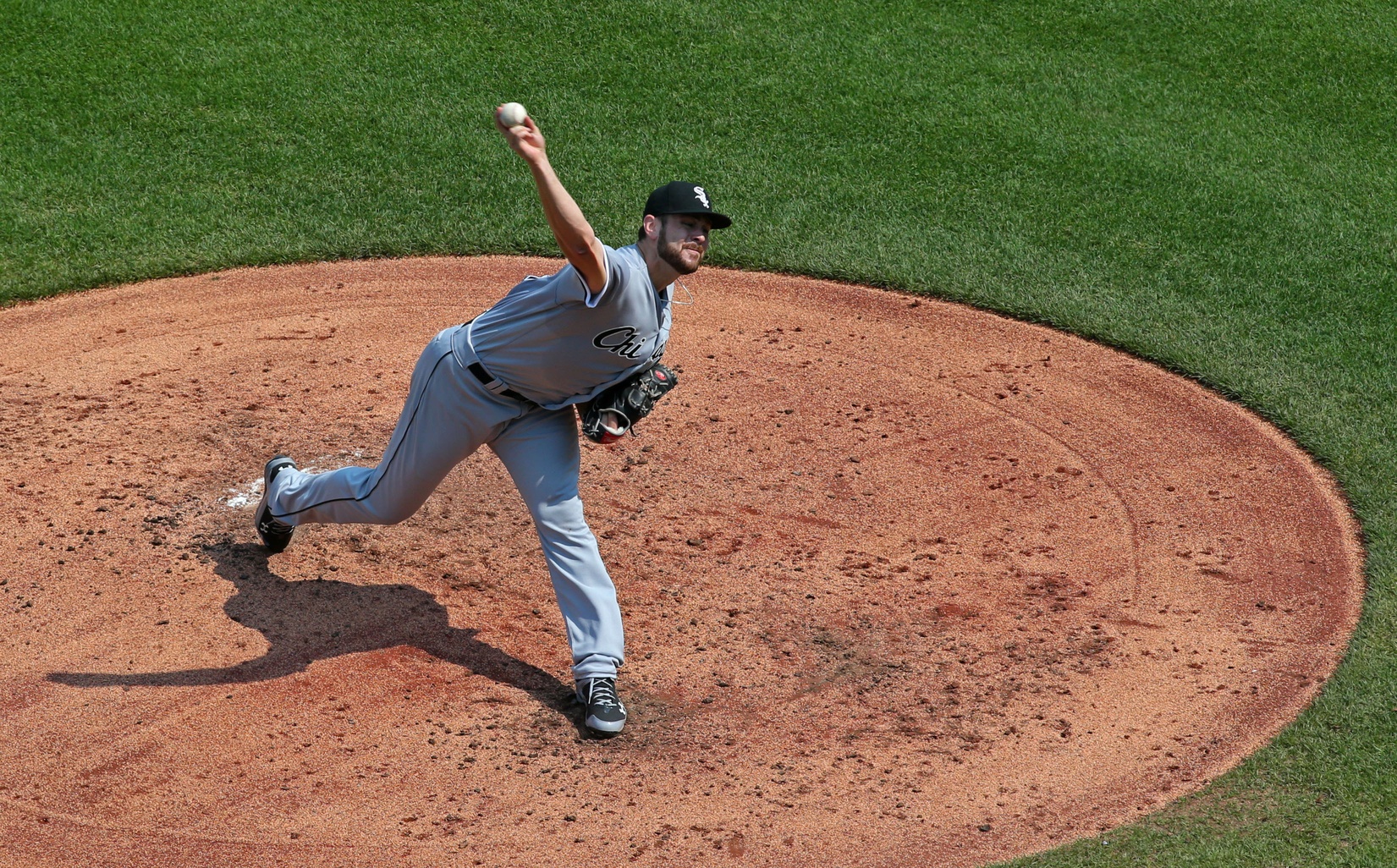Over the next few weeks, BP South Side will be reviewing the performance of all 51 players who suited up for the 2017 White Sox. Players whose seasons were particularly noteworthy will get their own standalone article, while smaller contributors or those who were traded/cut will be grouped together. We’ll do our best to summarize and analyze what each player brought to this year’s club, what we learned, didn’t learn, and what it all means for his future with the team.
When the White Sox traded for Lucas Giolito, he was still, at least technically speaking, among the best pitching prospect in baseball. His stock had fallen during his tortuous 2016 season, but with lists that reflected his poor trip to the big leagues yet to be written, he remained at the top. When those new lists were revealed, we had an entirely different outlook on who Giolito was. This is in our nature as fans and analysts, especially regarding players we have seen only in a couple major league starts, on a grainy MiLB.tv feed, or not at all. We trust those who have seen them and rely heavily on the arbitrary numbers next to their names despite those same people who have seen them telling us not to. With lowered expectations for Giolito, we entered the 2017 season.
To the surprise of nobody, Giolito started his season in Triple-A Charlotte. The White Sox believed they had identified major mechanical flaws that were hindering his success during the past season with the Nationals. Reworking those mechanics required time more than anything else. During that time, the results were naturally going to be less important than the process itself.
The majority of his time in Charlotte was spent doing exactly that. He was working on his mechanics, refining his command, and building up the effectiveness of his pitches beyond the fastball and curve. In 128 2/3 innings he had an unimpressive 4.48 ERA and 10.7 percent walk rate with just a 24.3 percent strikeout rate. He certainly was not the same pitcher who had skyrocketed to the top of prospect lists. What he did retain, however, through his velocity drop-off and mechanical adventure is the ability to pitch. It’s not something that can be taught but rather something innate to a very specific set of people.
It was that innate ability to pitch that helped Giolito have smashing success in the big leagues. He pitched just 45 1/3 innings over seven starts, so the sample is incredible small to base analysis off of. However, it was a good 45 1/3 innings, and many young pitchers cannot even lay claim to that long a stretch of good performance. He had a 2.38 ERA during his time in Chicago, but more importantly he had just a 6.7 percent walk rate.
If there are questions about how Giolito went from mediocre in the minor leagues to really good in the big leagues this season, the answer lies almost solely in the walk rate. Giolito was lacking command of his fastball as well as useful secondary pitches. It was easy to see when he had both of those tools working for him because they led to his outstanding starts.
Giolito’s future is still very much in question. In the same way that his short time in Washington did not overtly map out his future, his short time in Chicago has not either. There is room to improve, and there is room to go down. Where he goes is up to him, but the fact remains that he still has the tools to be a very useful starter. If that means he finds himself in the middle of a future White Sox rotation with a league average ERA but ability to pop off an ace-like start now and then, the team would be incredibly pleased. It could also mean that he crumbles and finds himself in the bullpen. Giolito’s 2017 was good improvement, but his future can be summed up in three letters: TBD.
Lead photo credit: Jay Biggerstaff-USA TODAY Sports

1 comment on “White Sox Season in Review: Lucas Giolito”
Comments are closed.